Basilica of Mary, Help of Christians, Belmont Abbey
Introduction
Text-to-speech Audio
The Basilica of Mary, Help of Christians is the spiritual center of the Benedictine monks of Belmont Abbey monastery and the Belmont Abbey college community. Listed on the National Register of Historic Places in 1972 and designated as a minor basilica by Pope John Paul II in 1998, the history of the Abbey Basilica is intertwined with the development of the Roman Catholic Church in North Carolina.
Images
The Basillica of Mary, Help of Christians in 1975. Source: Fr. Paschal Baumstein, Blessings in the Years to Come (1997)
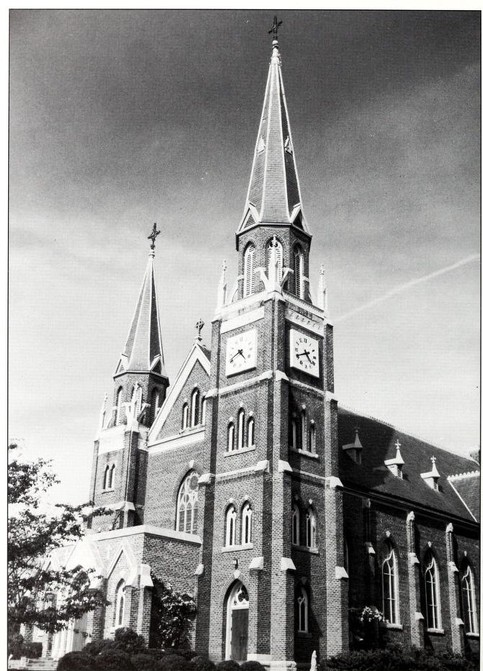
Monastery chapel used before construction of the Basilica, built in 1877. Source: Fr. Paschal Baumstein, Blessings in the Years to Come (1997).
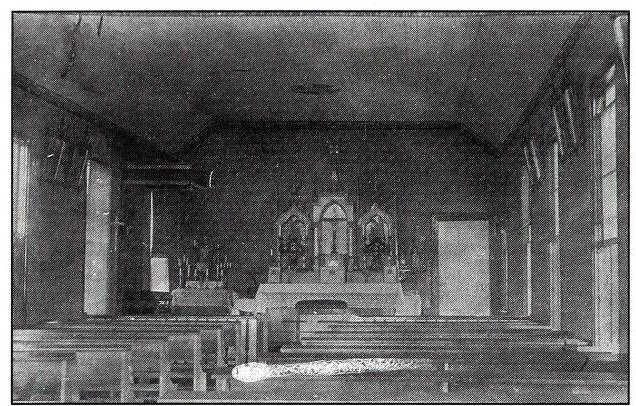
Interior of the Abbey Basilica in 1894, shortly after its construction. Source: Fr. Paschal Baumstein, Blessings in the Years to Come (1997).
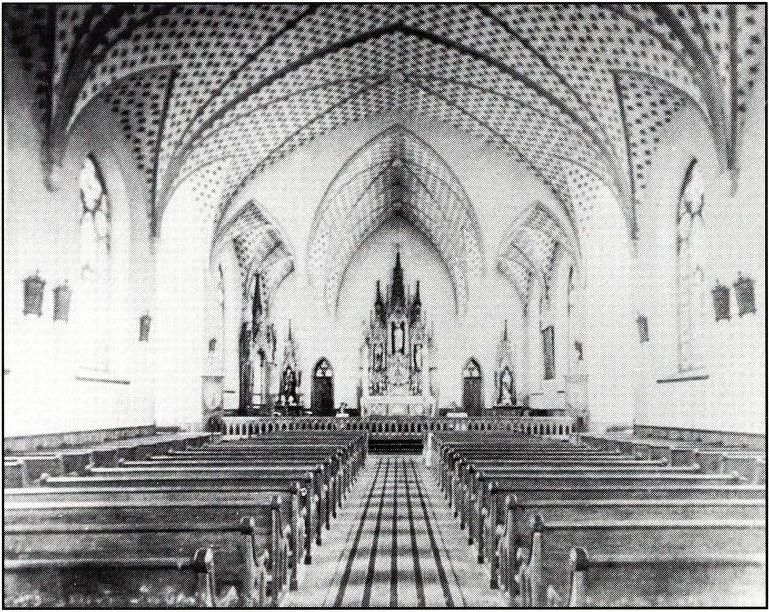
Abbot Leo Haid (1913), vicar apostolic of North Carolina and the founding abbot of Maryhelp Abbey. Source: The Catholic Church in the United States of America: Undertaken to Celebrate the Golden Jubilee of His Holiness, Pope Pius X, Volume 3.
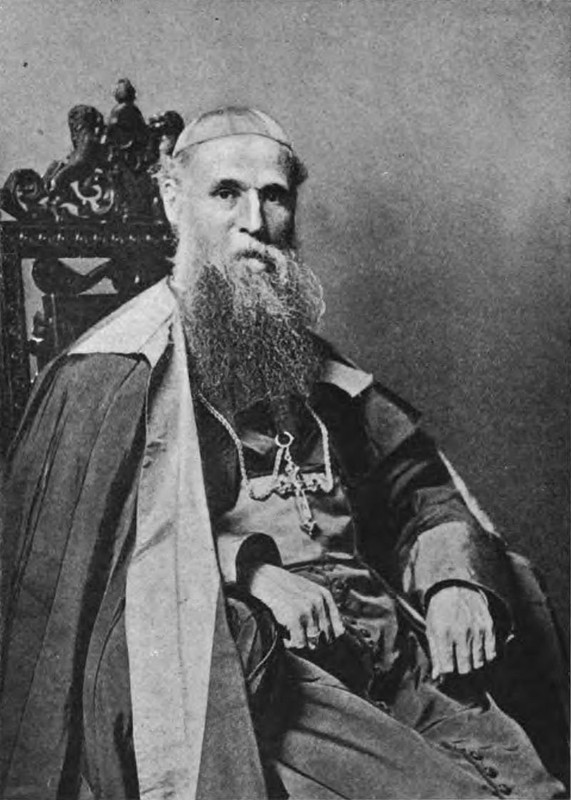
Monastery chapel used before construction of the Basilica, built in 1877. Source: Fr. Paschal Baumstein, Blessings in the Years to Come (1997).
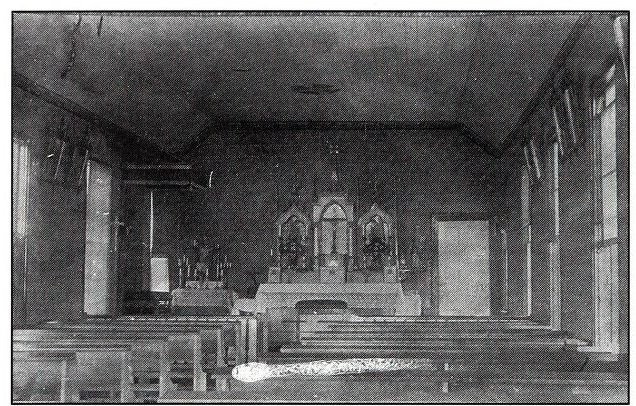
Interior of the Abbey Basilica in 1894, shortly after its construction. Source: Fr. Paschal Baumstein, Blessings in the Years to Come (1997).
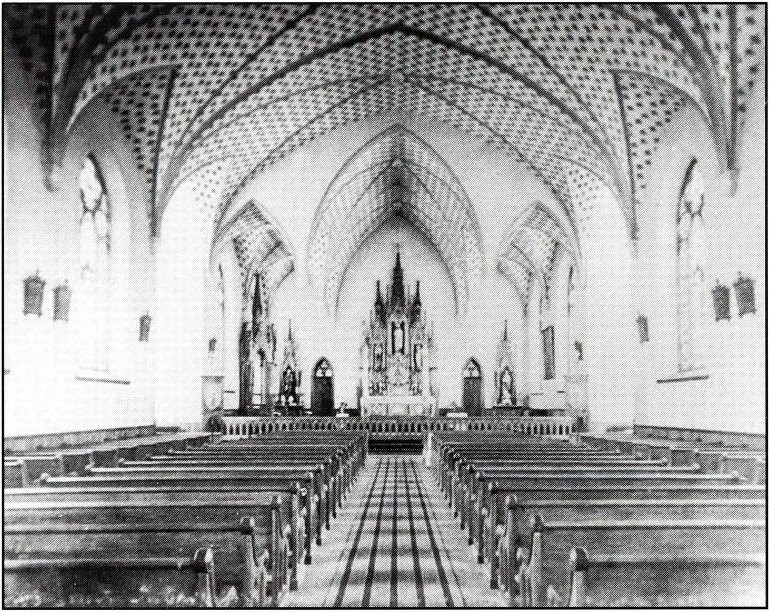
Statue of St. Benedict, founder of the Benedictine order, at the entrance of the Basilica.
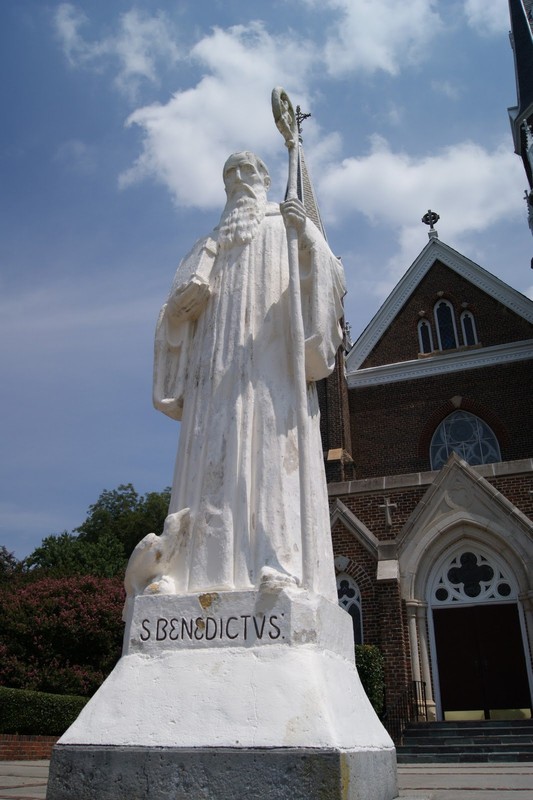
Exterior of Mary, Help of Christians Basilica.
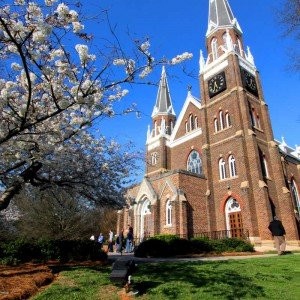
Painted window of St. Patrick, located in the interior of the Abbey Basilica. Created by the Royal Bavarian Establishment of Francis Meyer & Company in Munich, Germany, 1890s.
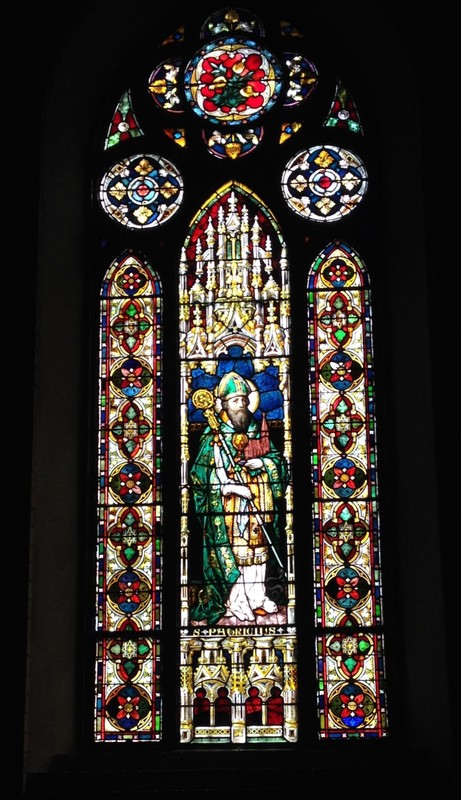
Interior of the Basilica during the funeral mass of Abbot Leo Haid, 1924. Source: Fr. Paschal Baumstein, Blessings in the Years to Come (1997).
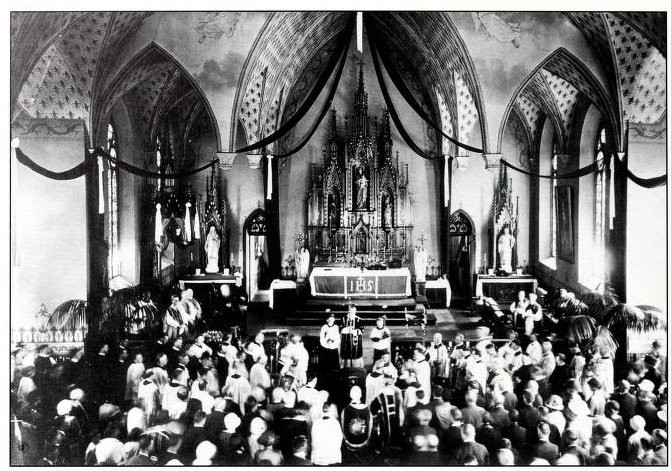
Monks of Belmont Abbey praying the Divine Office following the 1964 redesign of the Basilica interior.
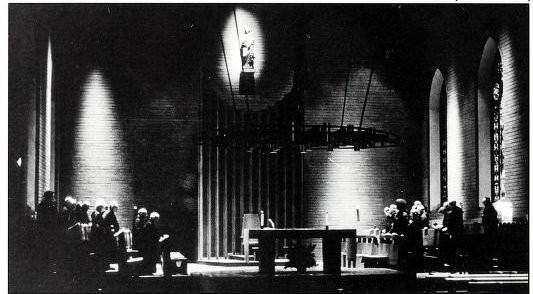
Matriculation ceremony for new students at Belmont Abbey College, 2018.
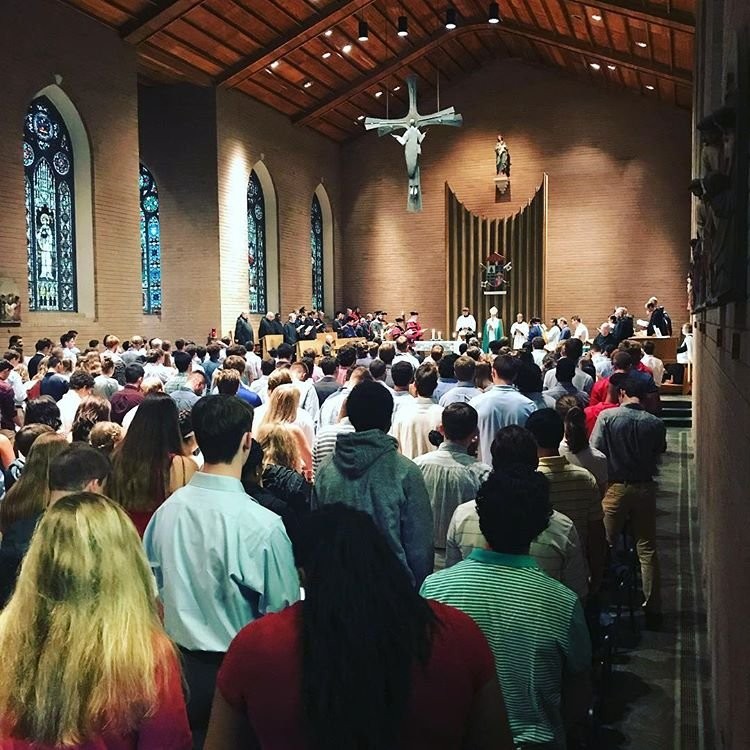
Baptismal font in the narthex of the Abbey Basilica. Fr. Paschal Baumstein, Blessings in the Years to Come (1997).
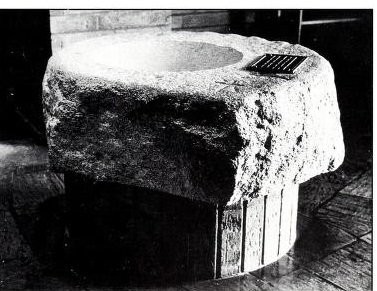
The 140th commencement exercises in front of Mary, Help of Christians Basilica on May 12, 2018.
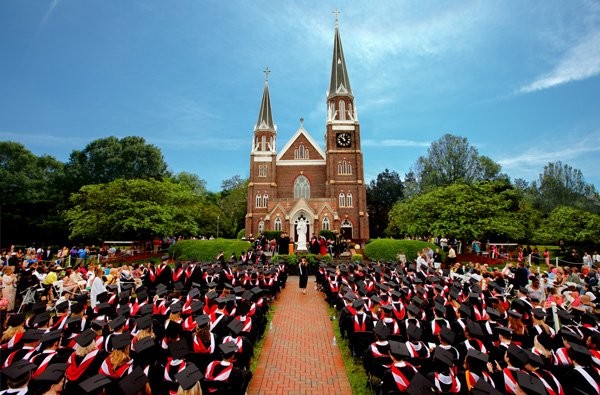
Backstory and Context
Text-to-speech Audio
Until the late 19th century the Catholic population in North Carolina consisted of small, scattered parishes that served a few circuit-riding priests. To facilitate Catholicism's growth, in 1876 diocesan priest Fr. Jeremiah O’Connell purchased 500 acres of land in Gaston County, offering the tract to religious orders for the establishment of an institution of higher learning. After appeals to several orders, O'Connell secured the agreement of Abbot Boniface Wimmer, Abbot of St. Vincent's Abbey in Latrobe, Pennsylvania to send members of his German-American Benedictine monastery to accept this gift. On April 26, 1876, a monk and two students arrived to the property to establish the Priory of Mary, Help of Christians, or Maryhelp. By 1885 Maryhelp had become an independent abbey under the leadership of Abbot Leo Haid. For almost the next forty years Abbot Haid led Maryhelp's monastic community, and soon, the entire Catholic community of North Carolina. In 1887, Pope Leo XIII named Haid the Vicar Apostolic of North Carolina, a title investing Haid with the authority of a bishop for this missionary region.1
A small chapel initially served the monastery before ground was broken for the Basilica. On May 21, 1892, construction began for the Abbey Church of Maryhelp. However, the project faced grave perils when funds were exhausted in mid-construction. Abbot Leo Haid successfully completed the cathedral through the intercession of St. Katharine Drexel, founder of the Sisters of the Blessed Sacrament and the first U.S. citizen canonized as a saint. Drexel, a noted advocate for the cause of African Americans and Native Americans, donated $4,000 after Haid offered to racially integrate the church, a bold act in the face of segregation's increasing hold on the region during the Jim Crow era.2
The Abbey Church was dedicated in 1894. Peter Dederichs, a Detroit architect, designed the structure in the Gothic Revival style and built it in the form of a cross. He built a roof of slate shingles, and on the west facade, he raised two towers. The first tower is one hundred fifty feet tall, while the other is one hundred feet. The taller tower contains three bells, which continue to ring across campus today. The tower clock was added in 1909. The narthex was built in 1964, and a ramp installed for wheelchair accessibility in 1981.3
Standing in front of the Basilica is a statute of St. Benedict, the father of Western monasticism and founder of the Benedictine order. The statue was imported from Italy in 1924. The statue's symbols reflect the Benedictine tradition and accounts of Benedict's life. The staff, or crosier, represents St. Benedict's authority as abbot. The book represents the Rule of St. Benedict, the central text of Benedictine monastic life. The crow standing at Benedict's feet comes from The Life and Miracles of St. Benedict, the sixth-century hagiography attributed to Pope Gregory the Great. According to this text, an attempt on Benedict's life was foiled through a miraculous intercession when a crow snatched away poisoned food. Today the statue of St. Benedict is a popular spot for photographs and overlooks graduates during the annual commencement exercises.4
The interior of the cathedral prior to 1964 was greatly ornamented by the early monks with a variety of tastes and styles. The most notable ornamentation is the painted glass windows. The windows were created by the Royal Bavarian Establishment of Francis Meyer & Company in Munich, Germany. Mayer submitted the ten windows to the 1892 World’s Fair in Chicago, which won four gold medals. Beyond their beauty, the painted windows informed worshipers of biblical history and the lives of the saints. Windows in the nave portray saints important to the Benedictine tradition, such as St. Benedict, St. Scholastica, St. Boniface, and St. Anselm. Another notable window is dedicated to St. Patrick, easily identified by the shamrock and his green garment. His window was installed to appeal to Irish congregants, an important presence among the scant Catholic population in the state.5
In 1964 the monastery hired Friedrich Schmitt, an architect from Charlotte, to redesign the interior of the cathedral. Schmitt’s vision was to align natural surfaces with the painted windows. The current ceiling is made of cedar, and crafted to appear like a sailing vessel. The pews and choir stalls are oak with olive stain. The floor is flagstone that is polished and waxed, and altars made of Georgia marble. The brick walls were also added during the renovation.
Another notable addition made during the 1964 renovations was a distinctive baptismal font. Installed in the narthex was a large circular stone that had stood on the campus since the arrival of the monks. Some claimed the stone was used as a Native American altar, and later for the auctioning of slaves. In 1965 a plaque was added to the stone that states: “Upon this rock, men once were sold into slavery. Now upon this rock, through the waters of Baptism, men become free children of God.”6
The Basilica held the designation of a cathedral from 1910-1977, reflecting the distinctive canonical status of the abbot of Belmont Abbey within North Carolina's Catholic hierarchy. Over those decades the Catholic population of the state swelled, resulting in the establishment of the Diocese of Raleigh in 1925, and the Diocese of Charlotte in 1972. Abbot Leo Haid and the monastic community of Belmont Abbey contributed to the growth of this community through their leadership, prayer, and sacrifice. In recognition of the importance of this structure, in 1972 the structure was listed in the National Register of Historic Places.7 In 1998 the church was elevated to the status of minor basilica by Pope John Paul II, an honor granted because of the church's important contribution to the development of Catholicism in the region.8 Today Mary, Help of Christians Basilica serves the spiritual needs of the monks, faculty, staff, and students of Belmont Abbey. The Basilica's exterior also serves as the site for the annual commencements exercises of the college.
Sources
1. Fr. Paschal Baumstein, OSB. My Lord of Belmont: A Biography of Leo Haid (Belmont, NC: Laney-Smith & Archives of Belmont Abbey, 1995): 25-83.
2. Baumstein, My Lord of Belmont, 119-125.
3. Fr. Paschal Baumstein, OSB, "Abbey Basilica of Maryhelp." (Belmont, NC: Southern Benedictine Society of North Carolina, 1999). Link: https://belmontabbeycollege.edu/wp-content/uploads/2013/11/Basilica-brochure-4-pages.pdf
4. Terrence G. Kardong, OSB. The Life of Saint Benedict by Gregory the Great: Translation and Commentary (Collegeville, MN: Liturgical Press, 2009). Link: http://www.osb.org/gen/greg/
5. Baumstein, "Abbey Basilica of Maryhelp."
6. Baumstein, "Abbey Basilica of Maryhelp."
7. Nomination Form, Belmont Abbey Cathedral (Belmont), National Register of Historic Places (GS0001). March 11, 1973. North Carolina State Preservation Office. Link: http://www.hpo.ncdcr.gov/nr/GS0001.pdf
8. Pope John Paul II, "Litterae Apostolicae: Sacra Aedes." July 27, 1998. Vatican Publishing House. Link: http://w2.vatican.va/content/john-paul-ii/la/apost_letters/1998/documents/hf_jp-ii_apl_19980727_sacra-aedes.html
